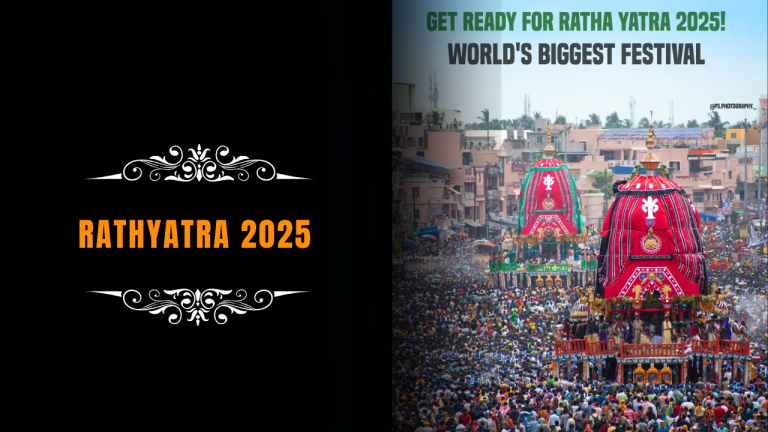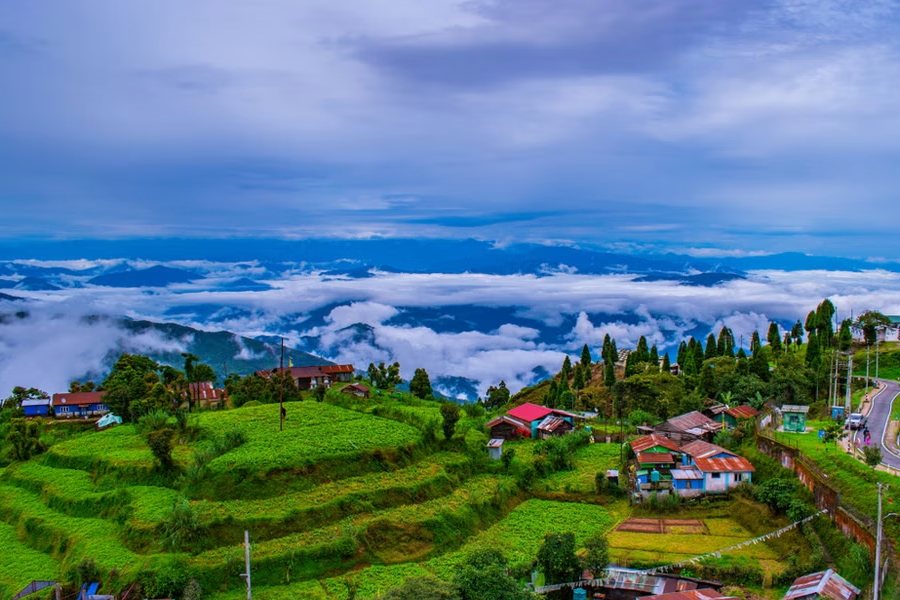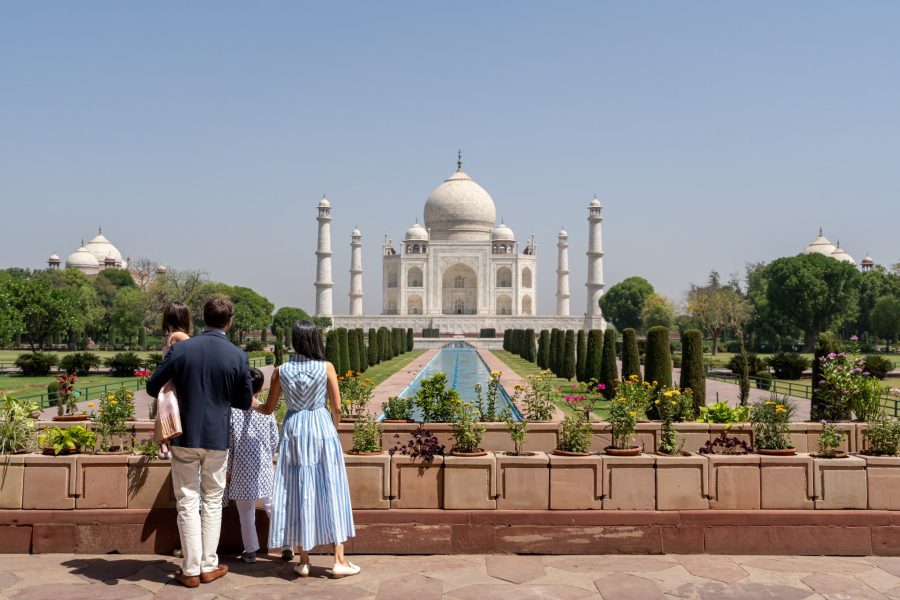Table of Contents
TogglePuri Jagannath Rath Yatra 2025:
Date, Schedule, and History You Need to Know
Puri Jagannath Rath Yatra 2025: Date, Schedule, and History You Need to Know – The Jagannath Rath Yatra, also known as the Festival of Chariots, is one of India’s most revered and grandest religious festivals. Held annually in Puri, Odisha, this event draws millions of devotees and tourists from around the world. In 2025, the Rath Yatra is scheduled to commence on Friday, June 27, marking the beginning of a series of elaborate rituals and celebrations that span over several days.

Key Dates and Schedule for Puri Jagannath Rath Yatra 2025
Akshaya Tritiya (April 30, 2025): Marks the beginning of the festival preparations, including the commencement of chariot construction.
Snana Purnima (June 11, 2025): The deities are bathed in 108 pots of holy water in a grand ceremony known as the ‘Snana Yatra.’
Anavasara (June 13 to 26, 2025): Following the Snana Purnima, the deities are believed to fall ill and rest in isolation for 15 days, during which they are not available for public viewing.
Gundicha Marjana (June 26, 2025): The Gundicha Temple is thoroughly cleaned to prepare for the arrival of the deities.
Ratha Yatra (June 27, 2025): The main event where the deities are placed on their respective chariots and pulled to the Gundicha Temple by thousands of devotees.
Hera Panchami (July 1, 2025): A ritual that marks Goddess Lakshmi’s visit to the Gundicha Temple in search of Lord Jagannath.
Sandhya Darshan (July 3, 2025): An auspicious evening viewing of the deities at the Gundicha Temple.
Bahuda Yatra (July 5, 2025): The return journey of the deities to the Jagannath Temple.
Suna Besha (July 6, 2025): The deities are adorned with gold ornaments in a grand display.
Adhara Pana (July 7, 2025): A sweet drink is offered to the deities on their chariots.
Niladri Bijay (July 8, 2025): Marks the deities’ return to the sanctum of the Jagannath Temple, concluding the festival.
🚩 The Chariots: Architectural Marvels
Each deity has a distinct chariot, meticulously crafted every year:
Nandighosha: The chariot of Lord Jagannath, featuring 16 wheels and adorned in red and yellow hues.
Taladhwaja: The chariot of Lord Balabhadra, with 14 wheels, decorated in red and blue.
Darpadalan: The chariot of Devi Subhadra, comprising 12 wheels and embellished in red and black.
These chariots are constructed using sacred neem wood, following age-old traditions, and are pulled by thousands of devotees along the Bada Danda (Grand Avenue)
🎉 Rituals and Ceremonies
Snana Purnima: Prior to the Rath Yatra, the deities are bathed with 108 pots of sacred water, leading to a 15-day period known as Anavasara, during which the deities are believed to fall ill and are kept away from public view
Chhera Pahanra: On the day of the Rath Yatra, the Gajapati King of Puri sweeps the chariot platforms with a golden broom, signifying that even the king is a humble servant of the Lord.
Gundicha Marjana: Devotees clean the Gundicha Temple to welcome the deities, symbolizing the purification of the heart for divine reception.
Bahuda Yatra: The return journey of the deities to the Jagannath Temple, retracing their path along the Bada Danda.
Niladri Bijay: The final ritual where the deities re-enter the Jagannath Temple, concluding the festival.
The Jagannath Rath Yatra, also known as the Chariot Festival, is one of the oldest and most iconic religious processions in the world. It is celebrated annually in Puri, a coastal city in Odisha, India, and holds deep historical, cultural, and spiritual significance.
Origins and Mythology
The Rath Yatra finds its roots in ancient Hindu scriptures and legends:
Jagannath is considered a form of Lord Vishnu or Krishna, and the festival commemorates his annual journey to his aunt’s home at Gundicha Temple, about 3 kilometers from the Jagannath Temple.
According to legend, Lord Krishna, along with his siblings Balabhadra (Balarama) and Subhadra, once wished to visit the Gundicha Temple. This tradition became the basis for the yearly Rath Yatra.
The festival symbolizes the divine retreat of the deities and is the only time when the idols are brought out of the temple for public view (called Pahandi).
Historical Records
The Rath Yatra has been celebrated since ancient times, with references in Puranic texts like the Skanda Purana, Padma Purana, and Brahma Purana.
Adi Shankaracharya, the 8th-century philosopher and saint, mentioned the Jagannath Temple and its associated rituals during his travels.
The temple and festival gained prominence under the patronage of King Anantavarman Chodaganga Deva of the Eastern Ganga dynasty, who commissioned the present structure of the Jagannath Temple in the 12th century.
The Gajapati Kings of Puri, descendants of the original ruling dynasties, still play ceremonial roles during the festival, such as performing the Chhera Pahanra (sweeping of the chariots with a golden broom).
Puri Jagannath Rath Yatra 2025
📌 In Summary:
Started: At least 12th century CE, with references even earlier
Location: Puri, Odisha
Deities: Lord Jagannath, Lord Balabhadra, Goddess Subhadra
Distance Covered: 3 km to Gundicha Temple
Chariots: Newly made each year using sacred rituals
Legacy: Celebrated globally; represents spiritual unity, equality, and joy
How to Reach Puri –
Puri, a sacred city in Odisha, is not only famous for the Jagannath Temple and Rath Yatra, but also for its beautiful beaches and spiritual heritage. It is well-connected by road, rail, and air, making it accessible from all parts of India.
Here’s a complete guide on how to reach Puri:
By Air – Nearest Airport to Puri
Nearest Airport: Biju Patnaik International Airport, Bhubaneswar (BBI)
Distance from Puri: Around 60 km
Travel Time: About 1.5 hours by taxi or bus
By Train – Puri Railway Station
Puri Railway Station (PURI) is a major railhead and terminal point for many long-distance express and superfast trains.
By Road – Reaching Puri by Bus or Car
From Bhubaneswar:
Distance: ~60 km
Travel Time: ~1.5 hours
Options: Regular OSRTC buses, taxis, and private cars
From Cuttack:
Distance: ~85 km
Travel Time: ~2 hours
From Kolkata:
Distance: ~500 km
Travel Time: ~10-12 hours
Options: Overnight sleeper buses or private travel coaches
🚌 Bus Services:
Odisha State Road Transport Corporation (OSRTC)
Private Volvo and sleeper buses
🚗 By Car:
National Highway 316 connects Bhubaneswar to Puri.
Scenic drive through countryside and rural Odisha.
Local Transport in Puri
Once you reach Puri, getting around is easy:
Auto-rickshaws
Cycle rickshaws
Electric tuk-tuks
Taxis (local and app-based in Bhubaneswar)
Rental scooters/bikes
Puri Jagannath Rath Yatra 2025
🧳 Travel Tips for Devotees
Accommodation: Book hotels or lodges well in advance, as Puri experiences a surge in visitors during the festival.
Transportation: Plan your travel early, considering the high demand for trains and buses to Puri.
Health Precautions: Stay hydrated, wear comfortable clothing, and be prepared for long walks or standing periods.
Local Customs: Respect local traditions and participate in the rituals with reverence.
Puri Jagannath Rath Yatra 2025
🌍 Cultural and Spiritual Impact
Puri Jagannath Rath Yatra 2025: Date, Schedule, and History You Need to Know
The Rath Yatra transcends religious boundaries, attracting people from various faiths and backgrounds. It emphasizes the themes of unity, devotion, and the cyclical nature of life. The festival also showcases Odisha’s rich cultural heritage, including traditional music, dance, and art forms.
Puri Jagannath Rath Yatra 2025: Date, Schedule, and History You Need to Know
Darjeeling Weekend Getaway 2 Nights 3 Days Tour from Siliguri
Darjeeling, West Bengal, India






Good communication nd service Hiren Sir… Nice Booking Hotel’s nd resorts nd travelling services…
I want odisha tour package please share the details